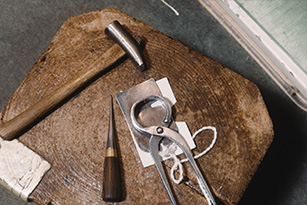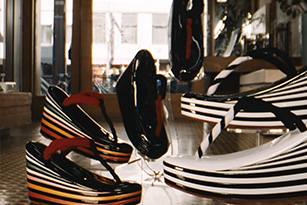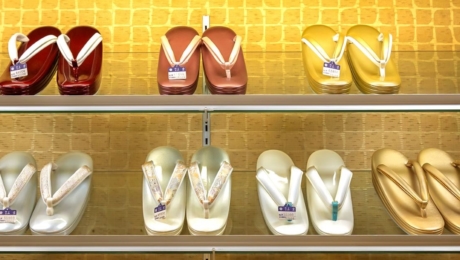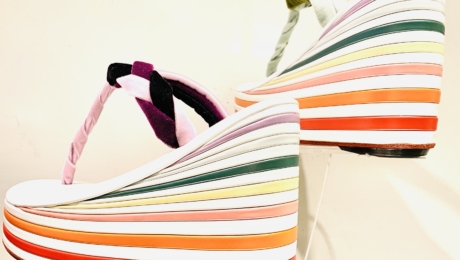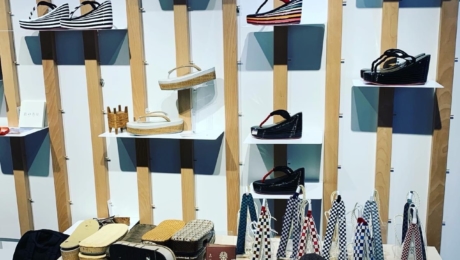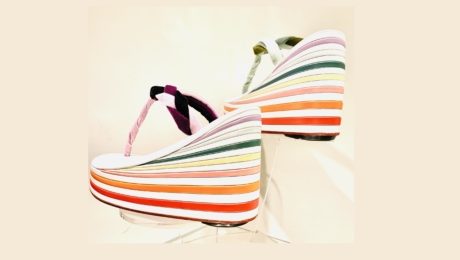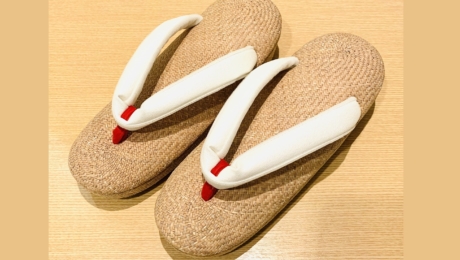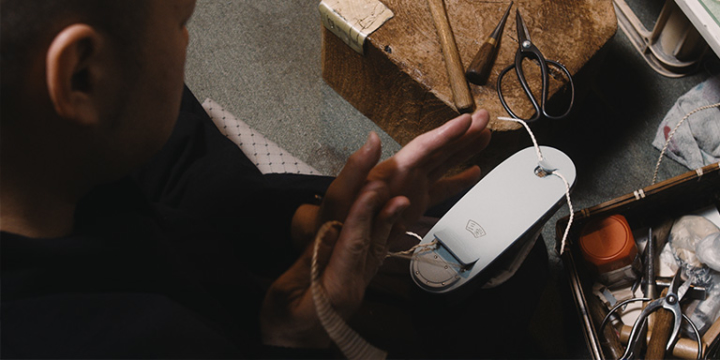
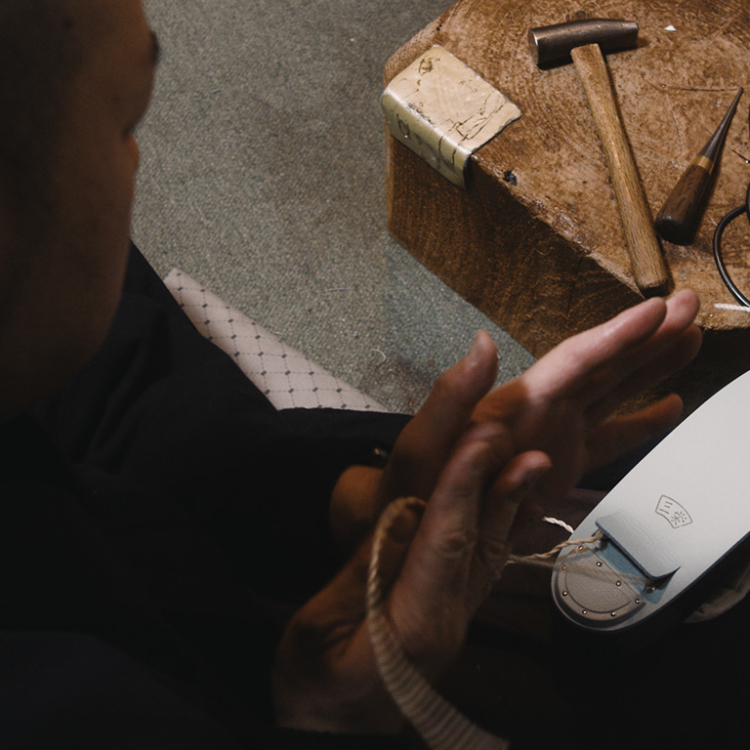
Zori, Japanese sandals made to suit both western and Japanese-style clothing, making your feet look beautiful
Zori, Japanese sandals are made using a base with a thong strap. The process of putting the thong through the base, known as suge in Japanese, is the key to deciding how the sandals feel when worn. When performed by a talented craftsman, the thongs are made to fit each individual, with the sandals snugly fitting the soles of one’s feet perfectly. This gives the individual an elegant way of walking, and most importantly prevents fatigue from walking.
Since its establishment in 1935, Yotsuya Sanei has garnered a great reputation of trust from those who buy Japanese sandals.
When first established, Yotsuya Sanei had a store in Akasaka. It was there in Akasaka’s hanamachi (geisha district) that the store’s products were in great demand. Geisha also played the role of fashion leaders at the time and had a keen eye for stylish footwear. In the post-war period, the business moved their store to Yotsuya. Following this, they began to enjoy patronage from masters of the tea ceremony and classical Japanese dance, becoming widely known as stylish Japanese sandals and a preferred choice for high-class events.
In addition to the precise talent of their suge process, Yotsuya Sanei have long been held in high regard for their good quality and tasteful product line-up. The products we see today have become what they are through craftsmen listening to customers’ demands to hone their skills. Mr. Makoto Ito, the third generation head of the business, carries on these traditions and wholly embraces this way of thinking, stating, “It is the history of Japanese sandals developed by our predecessors that connects us to our customers, and it is our customers who allow us to grow into what we are.”
In recent years, since establishing their own original brand, Yotsuya Sanei has enjoyed both domestic and international popularity for their unique dye colors and distinct materials.
The process of making one pair of sandals, from designing to finishing, takes two to three months, but this process gives birth to wonderful footwear that matches both western and Japanese clothing and is suited to a modern lifestyle. Mr. Ito speaks of the future of Japanese sandals, stating, “Japanese sandals are footwear unique to Japan and I sincerely hope that they garner attention from those all over the world through international collections.”
